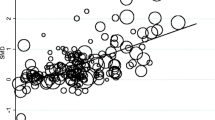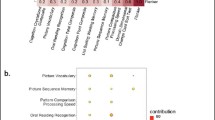Abstract
Oxidative stress has been associated with mild cognitive impairment (MCI) and Alzheimer’s disease (AD). However, little is known about oxidative stress in postoperative cognitive dysfunction (POCD) in aging. The aim of this study was to investigate urinary excretion rate of 8-isoprostane:creatinine (U8-isoPG:Cr) and malonaldehyde:creatinine (UMDA:Cr) to predict short-term POCD in elderly patients undergoing general and orthopedic surgery. 72 patients aged above 65 years were enrolled in this prospective observational study. Each patient underwent cognitive testing to determine POCD performed by an investigator before surgery and 1 week after surgery. Morning urine was collected at baseline, 1, 2, and 7 days postoperatively. U8-isoPG was performed using enzymelinked immunosorbent assay (ELISA), and UMDA levels were measured by chemiluminescence detection. Creatinine levels were also analyzed if differences in the oxidative biomarkers were observed in the urine creatinine concentration. (1). Of 72 patients who completed cognitive testing, postoperative cognitive dysfunction was detected in 29.2 % (n = 21) of patients in 7 days. (2) U8-isoPG:Cr levels in 7 days postoperatively were significantly higher in POCD patients compared with the non-POCD group (p = 0.01). When measuring change from baseline, U8-isoPG:Cr levels were higher than that of control groups (p = 0.01). (3) UMDA:Cr levels were significantly elevated in 1 and 2 days postoperatively in both groups (p < 0.05). U8-isoPG:Cr level seems to be a valuable marker to detect lipid peroxidation early in POCD patients. However, it will also be important to take into account or reduce potential confounders to improve the identification of changes in the status of oxidative stress as a marker for POCD.

Similar content being viewed by others
References
Bittner EA, Yue Y, Xie Z (2011) Brief review: anesthetic neurotoxicity in the elderly, cognitive dysfunction and Alzheimer’s disease. Can J Anaesth 58(2):216–223
Phillips-Bute B, Mathew JP, Blumenthal JA, Grocott HP, Laskowitz DT, Jones RH, Mark DB, Newman MF (2006) Association of neurocognitive function and quality of life 1 year after coronary artery bypass graft (CABG) surgery. Psychosom Med 68(3):369–375
Perry G, Nunomura A, Hirai K, Zhu X, Perez M, Avila J, Castellani RJ, Atwood CS, Aliev G, Sayre LM, Takeda A, Smith MA (2002) Is oxidative damage the fundamental pathogenic mechanism of Alzheimer’s and other neurodegenerative diseases? Free Radic Biol Med 33(11):1475–1479
Smith MA, Perry G, Richey PL, Sayre LM, Anderson VE, Beal MF, Kowall N (1996) Oxidative damage in alzheimer’s. Nature 382(6587):120–121
Boyd-Kimball D, Castegna A, Sultana R (2005) Fai Poon H, Petroze R, Lynn BC, Klein JB, Butterfield DA. Proteomic identification of proteins oxidized by Abeta (1–42) in synaptosomes:implications for Alzheimer’s disease. Brain Res 1044(2):206–215
Liu Q, Raina AK, Smith MA, Sayre LM, Perry G (2003) Hydroxynonenal, toxic carbonyls, and Alzheimer disease. Mole Aspects Med 24(4–5):305–313
Sultana R, Butterfield DA (2010) Role of oxidative stress in the progression of Alzheimer’s disease. J Alzheimer Dis 19(1):341–353
Butterfield DA (2010) Bader Lange ML, Sultana R. Involvements of the Lipid Peroxidation Product, HNE, in the Pathogenesis and Progression of Alzheimer’s Disease. Biochim Biophys Acta 1801(8):924–929
Butterfield DA, Drake J, Pocernich C, Castegna A (2001) Evidence of oxidative damage in Alzheimer’s disease brain:Central role for amyloid beta-peptide. Trends Mol Med 7(12):548–554
Morrow JD, Hill KE, Burk RF, Nammour TM, Badr KF, Roberts LJ 2nd (1990) A series of prostaglandin F2-like compounds are produced in vivo in humans by a non-cyclooxygenase, free radical-catalyzed mechanism. Proc Natl Acad Sci USA 87(23):9383–9387
Morrow JD (2000) The isoprostanes: their quantification as an index of oxidant stress status in vivo. Drug Metab Rev 32(3–4):377–385
Lawson JA, Rokach J, FitzGerald GA (1999) Isoprostanes: formation, analysis and use as indices of lipid peroxidation. J Biol Chem 274(35):24441–24444
Zhang B, Tian M, Zhen Y, Yue Y, Sherman J, Zheng H, Li S, Tanzi RE, Marcantonio ER, Xie Z (2012) The effects of isoflurane and desflurane on cognitive function in humans. Anesth Analg 114(2):410–415
Moller JT, Cluitmans P, Rasmussen LS, Houx P, Rasmussen H, Canet J, Rabbitt P, Jolles J, Larsen K, Hanning CD, Langeron O, Johnson T, Lauven PM, Kristensen PA, Biedler A, van Beem H, Fraidakis O, Silverstein JH, Beneken JE, Gravenstein JS (1998) Long-term postoperative cognitive dysfunction in the elderly ISPOCD1 study. ISPOCD Investigators. International Study of Post-Operative Cognitive Dysfunction. Lancet 351(9106):857–861
Steinmetz J, Christensen KB, Lund T, Lohse N (2009) ISPOCD Group. Long-term consequences of postoperative cognitive dysfunction. Anesthesiology 110(3):548–555
Jackson S (1966) Creatinine in urine as an index of urinary excretion rate. Health Phys 12(6):843–850
Khalil AM, Gagaa M, Alshamali A (2012) 8-Oxo-7,8-dihydro-2′-deoxyguanosine as a biomarker of DNA damage by mobile phone radiation. Hum Exp Toxicol 31(7):734–740
Tsai JP, Liou JH, Yeh KT, Tai HC, Cheng YW, Chang HR (2011) Intensity of cytosol expression of 8-OHdG in normal renal tubules is associated with the severity of renal fibrosis. Swiss Med Wkly 141:w13268
Esterbauer H, Schaur RJ, Zollner H (1991) Chemistry and biochemistry of 4-hydroxynonenal, malonaldehyde and related aldehydes. Free Radic Biol Med 11(1):81–128
Montine TJ, Morrow JD (2005) Fatty acid oxidation in the pathogenesis of Alzheimer’s disease. Am J Pathol 166(5):1283–1289
Shi GX, Liu CZ, Wang LP, Guan LP, Li SQ (2012) Biomarkers of Oxidative Stress in Vascular Dementia Patients. Can J Neurol Sci 39(1):65–68
Yao Y, Zhukareva V, Sung S, Clark CM, Rokach J, Lee VM, Trojanowski JQ, Pratico D (2003) Enhanced brain levels of 8,12-iso-iPF2alpha-VI differentiate AD from frontotemporal dementia. Neurology 61(4):475–478
Ansari MA, Scheff SW (2010) Oxidative stress in the progression of alzheimer disease in the frontal cortex. J Neuropathol Exp Neurol 69(2):155–167
Torres LL, Quaglio NB, de Souza GT, Garcia RT, Dati LM, Moreira WL, Loureiro AP, de Souza-Talarico JN, Smid J, Porto CS, Bottino CM, Nitrini R, Barros SB, Camarini R (2011) Alzheimers dis. peripheral oxidative stress biomarkers in mild cognitive impairment and alzheimer’s disease. J Alzheimers Dis. 26(1):59–68
Drury JA, Nycyk JA, Cooke RW (1997) Comparison of urinary and plasma malondialdehyde in preterm infants. Clin Chim Acta 263(2):177–185
McGrath LT, McGleenon BM, Brennan S, McColl D, McILroy S, Passmore AP (2001) Increased oxidative stress in Alzheimer’s disease as assessed with 4-hydroxynonenal but not malondialdehyde. QJM 94(9):485–490
Scholpp J, Schubert JK, Miekisch W, Noeldge-Schomburg GF (2004) Lipid peroxidation early after brain injury. J Neurotrauma 21(6):667–677
Cernak I, Savic VJ, Kotur J, Prokic V, Veljovic M, Grbovic D (2000) Characterization of plasma magnesium concentration and oxidative stress following graded traumatic brain injury in humans. J Neurotrauma 17(1):53–68
Acknowledgments
The study was funded by the Natural Science Foundation of China (NSFC 30872425). Special thanks to Dr. Janet Martin for her detailed editing and revision, who is the director of the Evidence Based Perioperative Clinical Outcomes Research (EPiCOR), the Department of Anesthesia & Perioperative Medicine of London Health Sciences Centre, University of Western Ontario, Canada.
Author information
Authors and Affiliations
Corresponding author
Rights and permissions
About this article
Cite this article
Cheng, Q., Wang, J., Wu, A. et al. Can urinary excretion rate of 8-isoprostrane and malonaldehyde predict postoperative cognitive dysfunction in aging?. Neurol Sci 34, 1665–1669 (2013). https://doi.org/10.1007/s10072-013-1314-z
Received:
Accepted:
Published:
Issue Date:
DOI: https://doi.org/10.1007/s10072-013-1314-z




